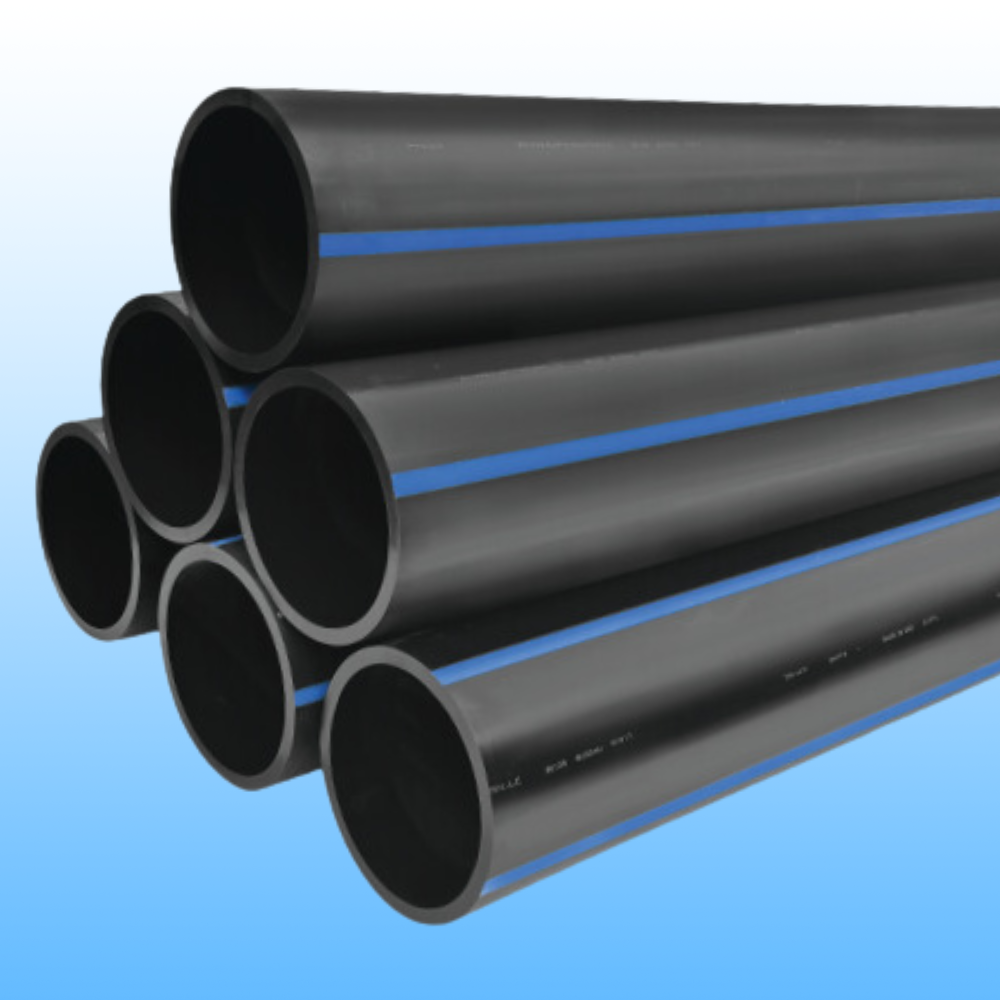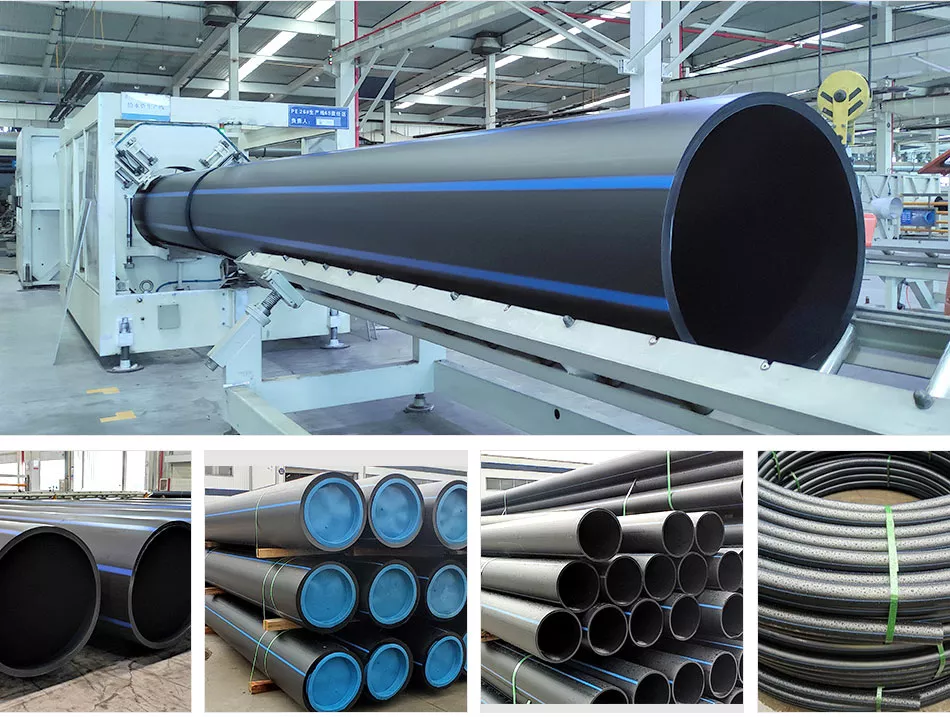The Essential Steps for Effective Installment of HDPE Pipeline in Your Following Job
Successful installation of HDPE pipe requires mindful preparation and implementation. Trick actions include assessing project requirements, preparing the website, and picking correct signing up with strategies. Each stage plays an essential function in making sure the integrity and performance of the pipe. Recognizing these necessary steps can considerably influence the overall success of the project - American Plastics HDPE Pipe for Oilfield. Nevertheless, the subtleties of each step might hold the key to getting over typical obstacles dealt with throughout installment
Recognizing the Perks of HDPE Pipe
High-density polyethylene (HDPE) pipeline provides countless benefits that make it a preferred selection for various applications. Its high resistance to rust and chemicals warranties toughness in demanding atmospheres, greatly prolonging the life expectancy of installments. Additionally, HDPE's versatility permits for simpler installment, specifically in challenging terrains, as it can bend without damaging. The light-weight nature of HDPE pipeline simplifies transportation and handling, minimizing labor prices during installment.
Moreover, HDPE pipe is recognized for its low friction coefficient, which improves liquid flow and lessens power usage. Its seamless construction minimizes the risk of leakages, adding to much better source administration and ecological protection. On top of that, HDPE is recyclable, lining up with lasting techniques and decreasing environmental impact. Generally, the mix of strength, flexibility, and eco-friendliness makes HDPE pipeline a premium selection for a large range of projects, from water circulation to industrial applications.
Planning Your HDPE Pipeline Installation
When planning a setup of HDPE pipe, mindful factor to consider of a number of crucial factors is essential to secure an effective task. Project supervisors need to analyze the particular needs of the pipe, consisting of the planned use, flow rates, and ecological conditions. Comprehending these criteria will certainly direct the choice of ideal pipeline dimensions and material quality.
Next off, timelines should be established, factoring in procurement timetables and any type of potential hold-ups. Coordination with neighborhood authorities for permits and governing compliance is likewise crucial. In addition, a detailed spending plan should be prepared, incorporating all costs connected with products, labor, and equipment.
Last but not least, it is very important to engage a qualified team experienced in HDPE pipeline setup. Their proficiency will certainly help alleviate dangers, guarantee adherence to industry requirements, and inevitably contribute to the task's success. Detailed planning lays the foundation for a smooth installation process and lasting efficiency of the HDPE piping system.
Preparing the Site for Installation
Correct site prep work is crucial for the successful installation of HDPE pipeline. Before installation starts, the site must be extensively analyzed to assure it satisfies all required needs. This consists of evaluating the ground for existing frameworks, utilities, and prospective hazards that can hamper the installation process.

Right altitude and placement ought to be developed to maintain a consistent slope for drainage purposes. Appropriate water drainage around the installment site is likewise crucial to stop water build-up, which can bring about complications down the line.
Methods for Signing Up With HDPE Pipes
Achieving a reputable link between HDPE pipelines is essential for making sure the integrity and longevity of the installation. Various techniques exist for joining these pipelines, each suited for different task demands. Blend welding is just one of the most usual methods, making use of warmth to bond the pipe finishes together, developing a smooth and long lasting link. This method can be additional classified into socket blend and butt fusion, relying on the pipeline setups.
Mechanical fittings are an additional option, employing clamps and threaded adapters to join sections of HDPE pipe. While usually faster to install, they might need added upkeep with time. Electrofusion is a customized technique that entails making use of electric present to warmth and fuse the pipelines via specifically made installations, ensuring a strong bond. Choosing the suitable joining method is essential, as it directly affects the general efficiency and dependability of the HDPE piping system in the designated application.
Checking and Examination of Installed Water Lines
The screening and examination of mounted HDPE pipes are crucial check here to ensuring their functionality and durability. This procedure encompasses aesthetic assessment methods, pressure testing techniques, and leakage detection procedures to determine possible concerns. By utilizing these approaches, professionals can validate the stability of the setup before it is taken into use.
Aesthetic Inspection Techniques
Using efficient visual examination strategies is vital for ensuring the honesty of mounted HDPE pipelines. Assessors must methodically examine all noticeable areas of the pipeline to determine any type of indications of damages, misalignment, or inappropriate installation. Key indicators to examine include joint honesty, surface abnormalities, and links. Inspectors might use devices such as multiplying glasses or cameras to boost visibility and detail. It is necessary to look for signs of ecological stress, such as distorting or too much bending, which could compromise performance. Regular documentation of findings enables tracking adjustments gradually and helps guide necessary fixings. By sticking to recognized visual evaluation methods, job groups can notably reduce the risk of future failures and ensure long-lasting dependability of the piping system.
Stress Evaluating Techniques
Aesthetic inspection works as a preliminary measure, yet it is not enough by itself to guarantee the efficiency of mounted HDPE pipes. Stress testing techniques are important for guaranteeing the honesty of these systems. Commonly, hydrostatic screening is used, where the pipes are filled up with water and subjected to stress degrees over the designated operating stress. This approach helps determine weak points or possible leakages. Pneumatically-driven testing can additionally be utilized, although it carries greater threats due to the compressibility of air. No matter of the technique picked, adhering to market standards and safety procedures is vital. After conducting stress tests, detailed paperwork is required to validate the results and verify that the installation meets all functional requirements before continuing to the next stage of the job.

Leak Discovery Treatments
Exactly how can one assure that set up HDPE pipelines are complimentary from leaks? Effective leakage discovery treatments are essential to protect the stability of the system. Visual assessments need to be done, looking for indicators of water build-up or soil disintegration around pipeline joints. Following this, pressure testing can verify the system's stamina. A common approach is the hydrostatic examination, where water is introduced under pressure, keeping an eye on for declines that show prospective leaks. In addition, advanced technologies, such as acoustic sensing units or infrared thermography, can spot leakages that may not show up. Regular surveillance and maintenance more add to the longevity of HDPE pipelines, guaranteeing they continue to be leak-free throughout their functional life expectancy. Appropriate documentation of these procedures is essential for compliance and future recommendation.
Upkeep Tips for Long-Term Performance
To assure the longevity of HDPE pipes, developing a normal evaluation timetable is crucial. This positive technique enables the early discovery of possible concerns, lessening costly repair services. In addition, applying proper cleaning techniques will aid maintain peak efficiency and stop build-up that can affect capability.
Routine Examination Arrange
HDPE pipes are recognized for their toughness and resistance to corrosion, establishing a routine evaluation schedule is essential for guaranteeing their long-term efficiency. Routine inspections aid recognize prospective problems such as leaks, joint honesty, and ecological effects that may influence the pipe's functionality. It is advised that inspections take place at least biannually, or a lot more often in atmospheres with extreme conditions. hdpe pipe fittings Midland TX. During these evaluations, aesthetic checks need to be performed to identify indicators of wear or damage. Furthermore, making use of innovation such as ultrasonic screening can provide more understandings into the pipeline's condition. By applying a structured evaluation schedule, task supervisors can proactively address problems, thus prolonging the life expectancy of HDPE pipes and keeping system efficiency
Proper Cleansing Techniques
Appropriate cleaning methods play an important duty in keeping the long-term performance of HDPE pipelines. Normal cleansing protects against the build-up of debris, sediment, and biofilm, which can lead to blockages and minimized circulation effectiveness. Operators must use methods such as high-pressure water jetting or foam cleansing to properly remove pollutants without harming the pipeline surface. It is crucial to avoid utilizing harsh chemicals that might deteriorate HDPE product. Furthermore, scheduled maintenance checks need to consist of visual assessments for any kind of indicators of wear or damage. Appropriately trained workers ought to perform these cleaning processes, making sure compliance with safety and security and environmental regulations. By implementing these practices, the lifespan of HDPE pipes can be substantially prolonged, ensuring perfect efficiency throughout their operational life.
Often Asked Questions
What Are the Ecological Influences of HDPE Pipe Manufacturing?
The ecological effects of HDPE pipeline manufacturing consist of greenhouse gas exhausts, power intake throughout production, prospective plastic pollution, and challenges in recycling. HDPE's long life and resistance to rust can reduce some ecological worries.
Just How Does HDPE Pipe Compare to Various Other Products?

What Tools Are Necessary for HDPE Pipe Setup?
Important tools for HDPE pipe installment consist of a combination machine, pipeline cutters, shovels, measuring tape, and safety and security equipment. Proper equipment guarantees reliable, risk-free handling and installation, adding to the project's general success and integrity.
Exist Any Kind Of Details Regulations for HDPE Pipeline Installment?
Certain regulations for HDPE pipe installation vary by region, commonly controlled by local, state, or government codes. Conformity with these laws warranties safety, ecological protection, and performance, making adherence important for successful task end results.
Can HDPE Pipes Be Recycled After Usage?
Yes, HDPE pipelines can be recycled after use. Their thermoplastic nature permits reprocessing, making them ideal for recycling right into new products. This sustainability element contributes to environmental preservation and advertises round economic climate methods in building and construction.